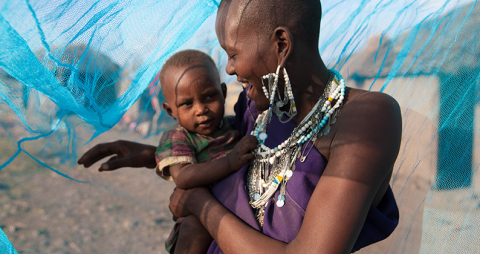Over the past 15 years, the global health community has achieved the remarkable feat of reducing the rate of malaria deaths by 57 percent. In sub-Saharan Africa, malaria no longer is the leading cause of mortality in children under the age of 5. Yet this disease still claims the lives of nearly 500,000 children every year (WHO 2015 Malaria Report).
The USAID Global Health Supply Chain Program-Procurement and Supply Management (GHSC-PSM) project strives to reduce the burden of malaria in keeping with the President’s Malaria Initiative (PMI) and USAID’s maternal and child health and infectious disease goals. Strong malaria supply chains ensure that the global community can respond to changing on-the-ground health needs and evolving care guidelines.
